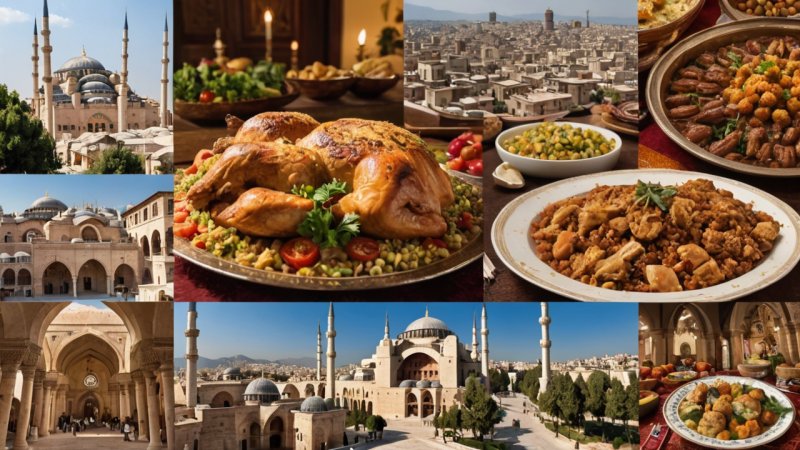The Ottoman Empire, which spanned over six centuries and covered parts of Europe, Asia, and Africa, has left an indelible mark on the cultural, social, and political fabric of modern Turkey. As the empire dissolved after World War I, the Republic of Turkey emerged, yet the legacy of the Ottomans continues to shape the nation in profound ways. This article delves into the various dimensions of Ottoman influence on contemporary Turkish society, exploring architecture, cuisine, language, and governance, among other aspects.
Historical Context of the Ottoman Empire
Founded in the late 13th century, the Ottoman Empire grew to become one of the most powerful empires in history. At its zenith, it encompassed vast territories, including the Balkans, the Middle East, and North Africa. The empire was renowned for its unique blend of cultures, religions, and traditions, which laid the groundwork for the rich tapestry of modern Turkish identity.
The End of the Empire and the Birth of the Republic
The empire began to decline in the 17th century, facing military defeats and internal strife, culminating in its dissolution after World War I. In 1923, Mustafa Kemal Atatürk established the Republic of Turkey, implementing numerous reforms aimed at modernizing the country. However, the remnants of Ottoman culture and governance have persisted, influencing various aspects of Turkish life.
Architectural Heritage
One of the most visible legacies of the Ottoman Empire is its architecture, which has profoundly influenced modern Turkish urban landscapes.
Iconic Structures
Buildings like the Hagia Sophia and the Blue Mosque in Istanbul are prime examples of Ottoman architectural prowess. These structures not only serve as religious sites but also as symbols of national pride and historical continuity. The use of domes, minarets, and intricate tile work continues to inspire contemporary Turkish architecture.
Urban Planning
The layout of many Turkish cities reflects the Ottoman practice of integrating public spaces, such as bazaars and mosques, into daily life. This tradition has influenced modern urban planning in Turkey, promoting communal spaces that foster social interaction.
Culinary Influences
The culinary landscape of Turkey is another area profoundly shaped by the Ottoman Empire. Ottoman cuisine was characterized by its diversity, incorporating flavors and techniques from various regions.
Dishes and Ingredients
Staples of Turkish cuisine, such as kebabs, mezes, and baklava, have roots in Ottoman culinary traditions. The use of spices, cooking methods, and presentation styles can be traced back to the Ottoman court, which was known for its lavish feasts.
Modern Turkish Cuisine
Today, Turkish cuisine continues to evolve while honoring its Ottoman heritage. Restaurants across the country serve traditional dishes alongside modern interpretations, reflecting a blend of historical influences and contemporary tastes.
Language and Literature
The Ottoman Empire also left a significant impact on the Turkish language and literature. The Ottoman Turkish language, a complex amalgamation of Turkish, Persian, and Arabic, served as the empire's administrative and literary language.
Language Reforms
Following the establishment of the Republic, Atatürk implemented a series of language reforms aimed at simplifying the Turkish language and making it more accessible to the general populace. However, many words and phrases from Ottoman Turkish still persist in modern Turkish, enriching its vocabulary.
Literary Contributions
Literature from the Ottoman era, including poetry and prose, continues to be studied and celebrated in Turkey. Authors such as Yahya Kemal Beyatlı and Halide Edib Adıvar drew upon Ottoman themes and styles, illustrating the enduring influence of this literary heritage.
Governance and Social Structures
The Ottoman Empire's governance model has also shaped modern Turkey's political landscape. The empire was characterized by a complex administrative system and a notable degree of religious tolerance.
Legal Framework
The legal code established during the Ottoman period laid the groundwork for Turkey's contemporary legal system. Many legal principles, particularly concerning property rights and family law, have their origins in Ottoman practices.
Social Cohesion
The Ottoman Empire was known for its millet system, which allowed various religious communities to govern themselves. This historical precedent of multiculturalism continues to influence Turkey's approach to diversity, as the nation grapples with its multi-ethnic identity.
Arts and Cultural Expressions
The arts in Turkey are deeply rooted in the Ottoman tradition, encompassing music, dance, and visual arts.
Music and Dance
Traditional Turkish music, with its intricate melodies and rhythms, can be traced back to the Ottoman era. Instruments such as the oud and the ney remain central to Turkish music today. Folk dances, often performed at celebrations and weddings, reflect the diverse cultural heritage of the country.
Visual Arts
Ottoman art, particularly calligraphy and miniature painting, continues to inspire contemporary Turkish artists. Modern exhibitions showcase a fusion of traditional and contemporary styles, highlighting the ongoing dialogue between past and present.
Conclusion
The influence of the Ottoman Empire on modern Turkey is profound and multifaceted, permeating various aspects of daily life, culture, and identity. From architectural marvels to culinary delights, the echoes of this historical empire resonate throughout the nation. As Turkey continues to navigate its path in the modern world, understanding the Ottoman legacy is crucial for appreciating its rich cultural heritage and the complexities of its contemporary society.






